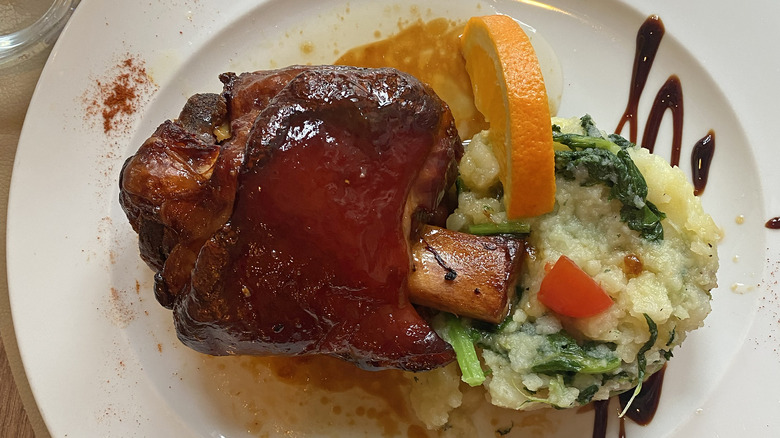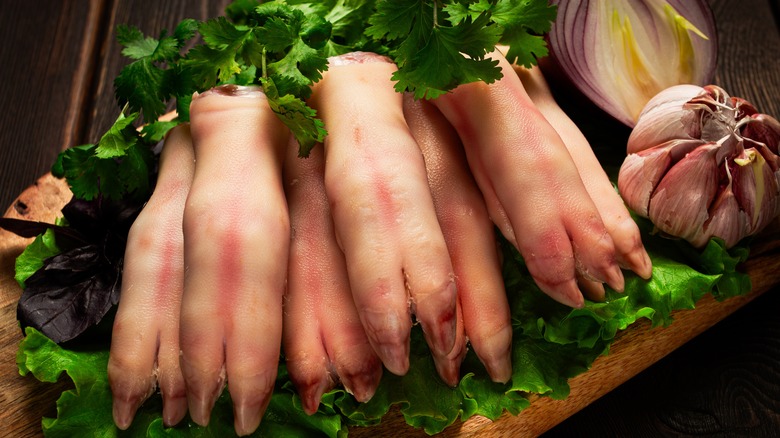What's The Difference Between A Pig Knuckle And A Pig Trotter?
Lots of people like to eat pork, but not as many people want to know what parts of the pig their pork came from. This is understandable — nobody wants to think about dead animals, after all — and it's especially understandable when dealing with the parts of the pig that are recognizable. Many of the best pork recipes, whether they take the form of a pork chop, a slab of bacon, or even a rack of ribs, are abstracted enough that people will happily eat it without a second thought. But pig feet? Why would you want to eat a pig's feet? What are you, some kind of sicko?
Far from it. In fact, pig feet (or trotters) are tasty sources of pork flavor, whether eaten on their own or added to a soup or stew. But wait just a minute here — you may also have heard of something called a "pork knuckle," and it looked nothing at all like a pig's foot, even though it should logically be the same thing. What gives? Well, simply put, they both come from the same part of the pig, the pork knuckle just comes from a little higher up on the leg.
Pig knuckles and pig trotters are attached to each other
The other, more familiar phrase for pig knuckle is "ham hock." It's the part of the pig's leg between the fuller, juicier ham and the tougher, bonier trotter. It's delicious when cooked properly — which is to say low and slow, whether on a smoker or in a braise (both of which are great ways to tenderize meat) — but it's so tough and chewy otherwise that it often gets overlooked. You may not be able to find them in a supermarket, but a butcher will likely have what you're looking for. And it's also a relatively inexpensive cut of meat despite its not-inconsiderable size, making it a good choice for an economical meal.
Trotters, on the other hand, are exactly what they sound like: They're what a pig trots on, its feet. These are much more difficult to contend with than the pork knuckle. They're extremely bony and gristly, and they have to be split in two to make proper use of them. You'll almost definitely have to get these from a butcher, who will likely also be able to split them for you. (Maybe he can show you how to make homemade shake and bake pork chops, too.) Then you have to soak them overnight and deep-clean them, scraping them off with a knife. After that, though, you can cook them any number of ways, with both Soul Food and Chinese recipes being good contenders.

